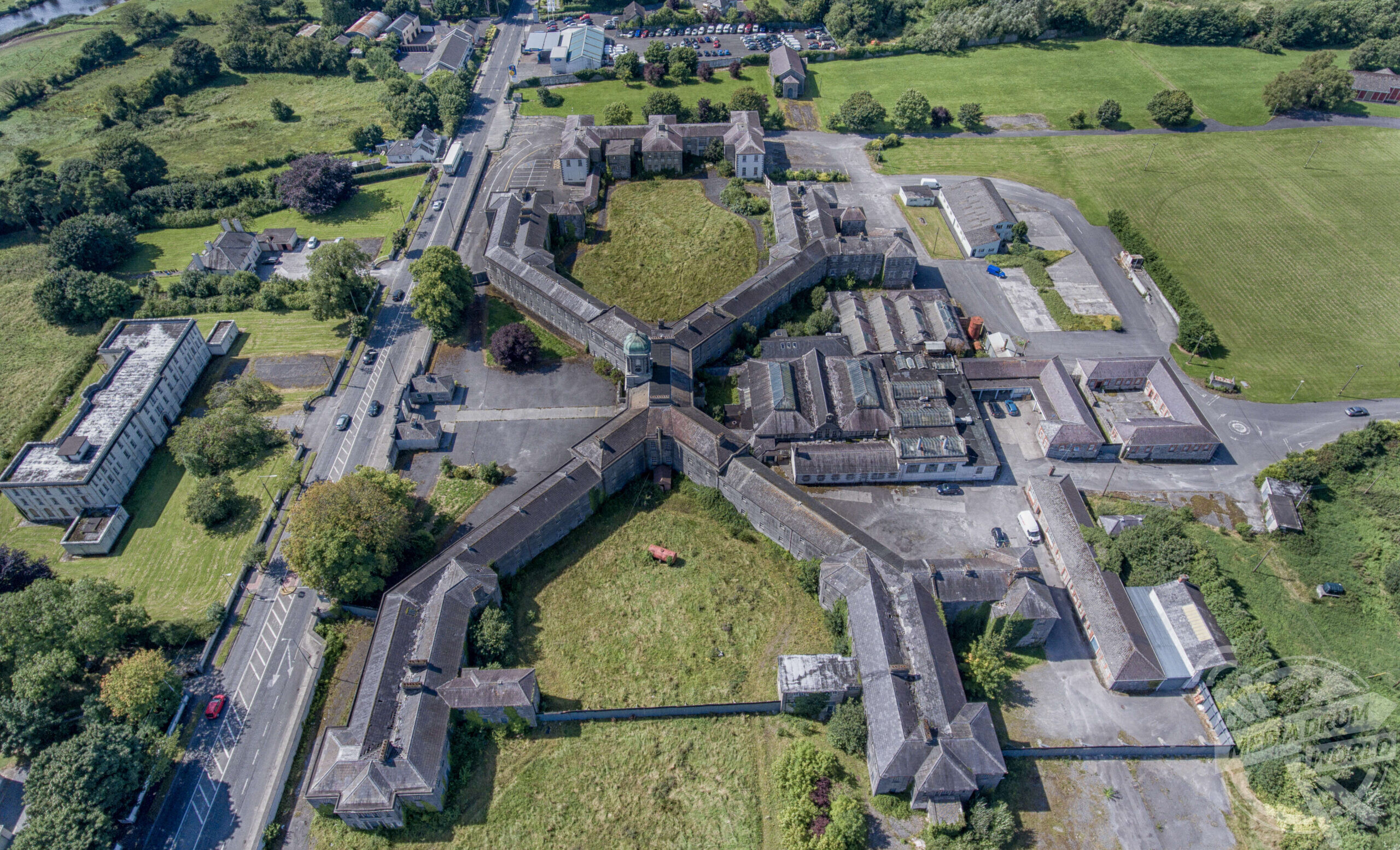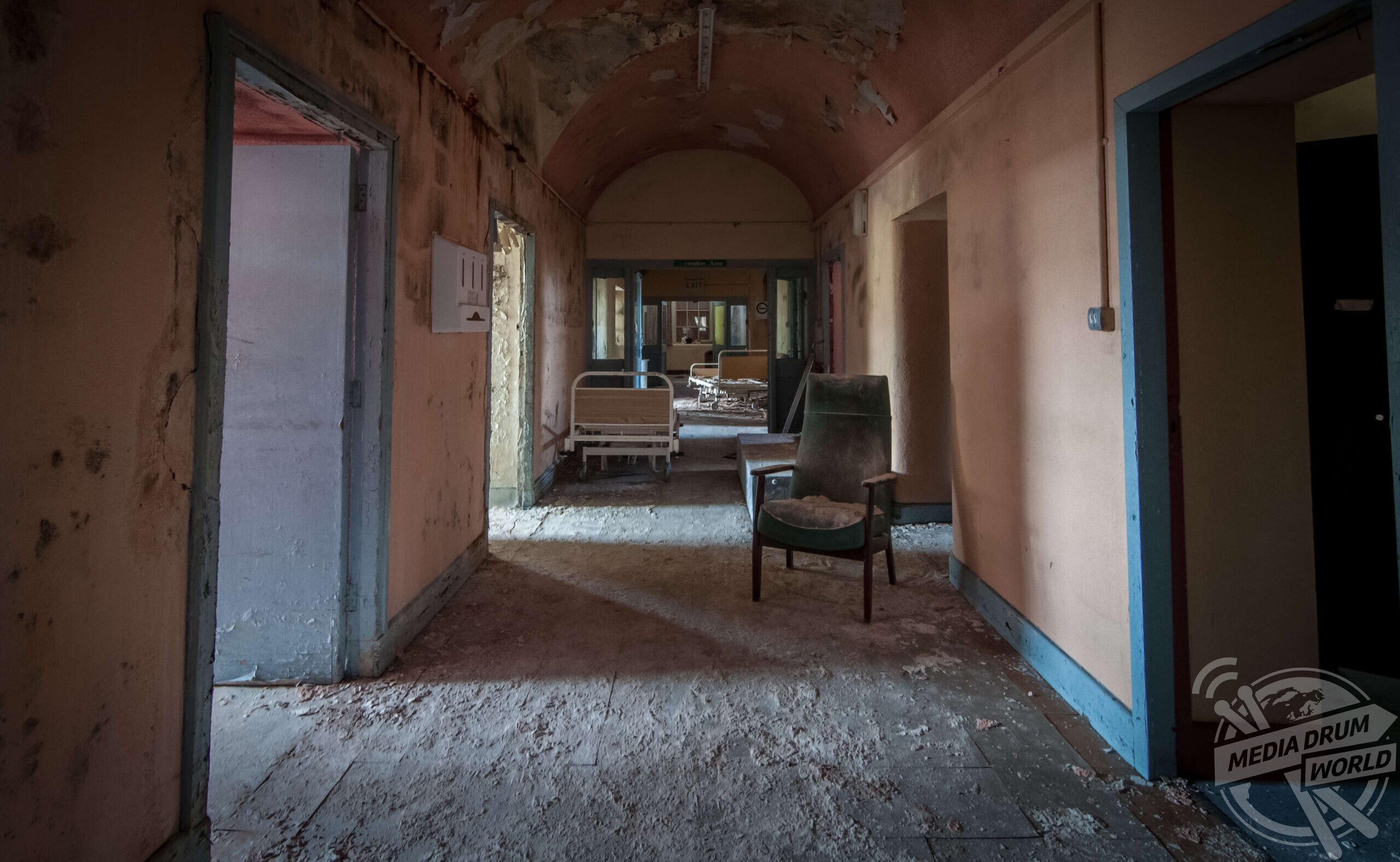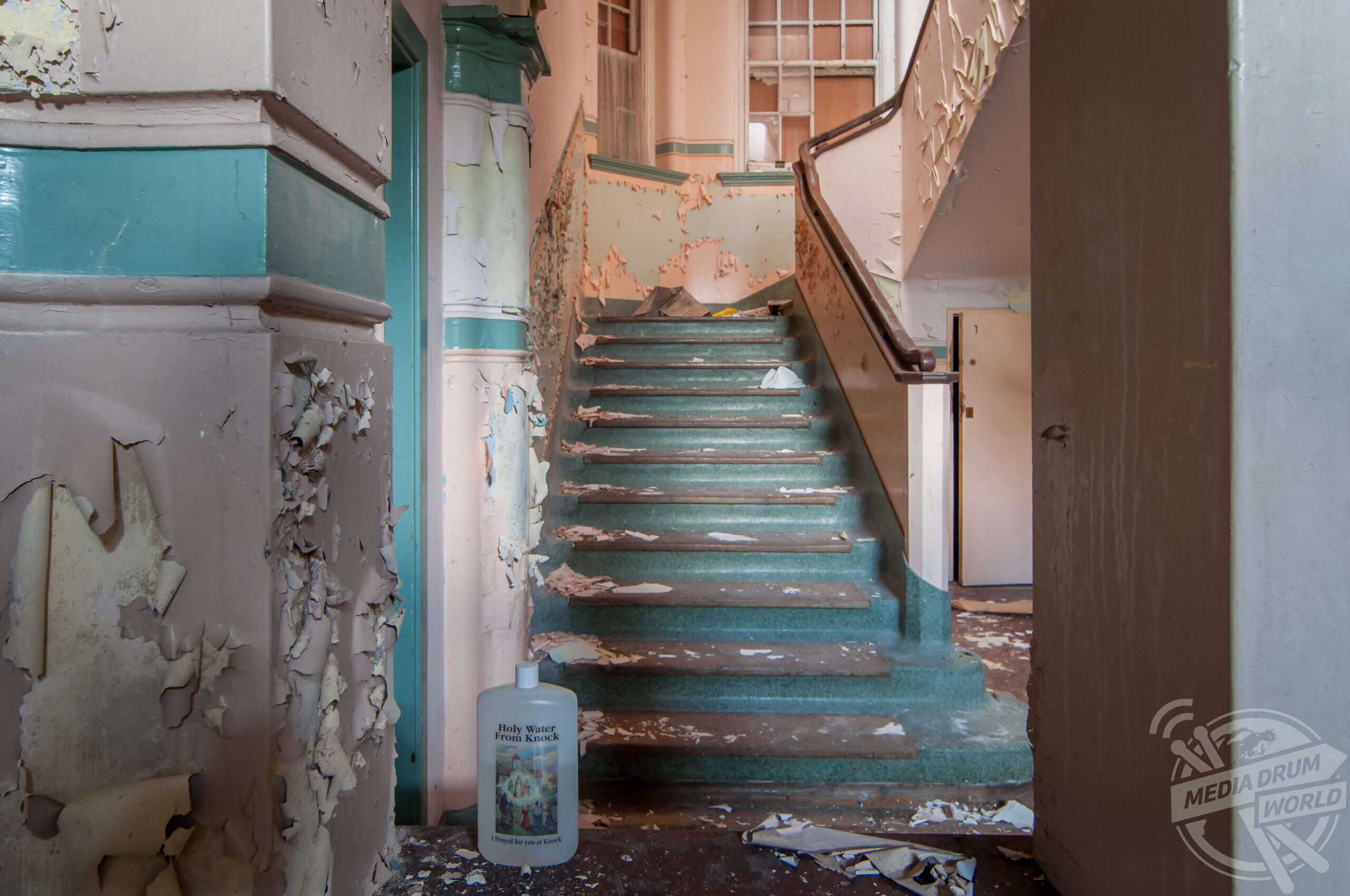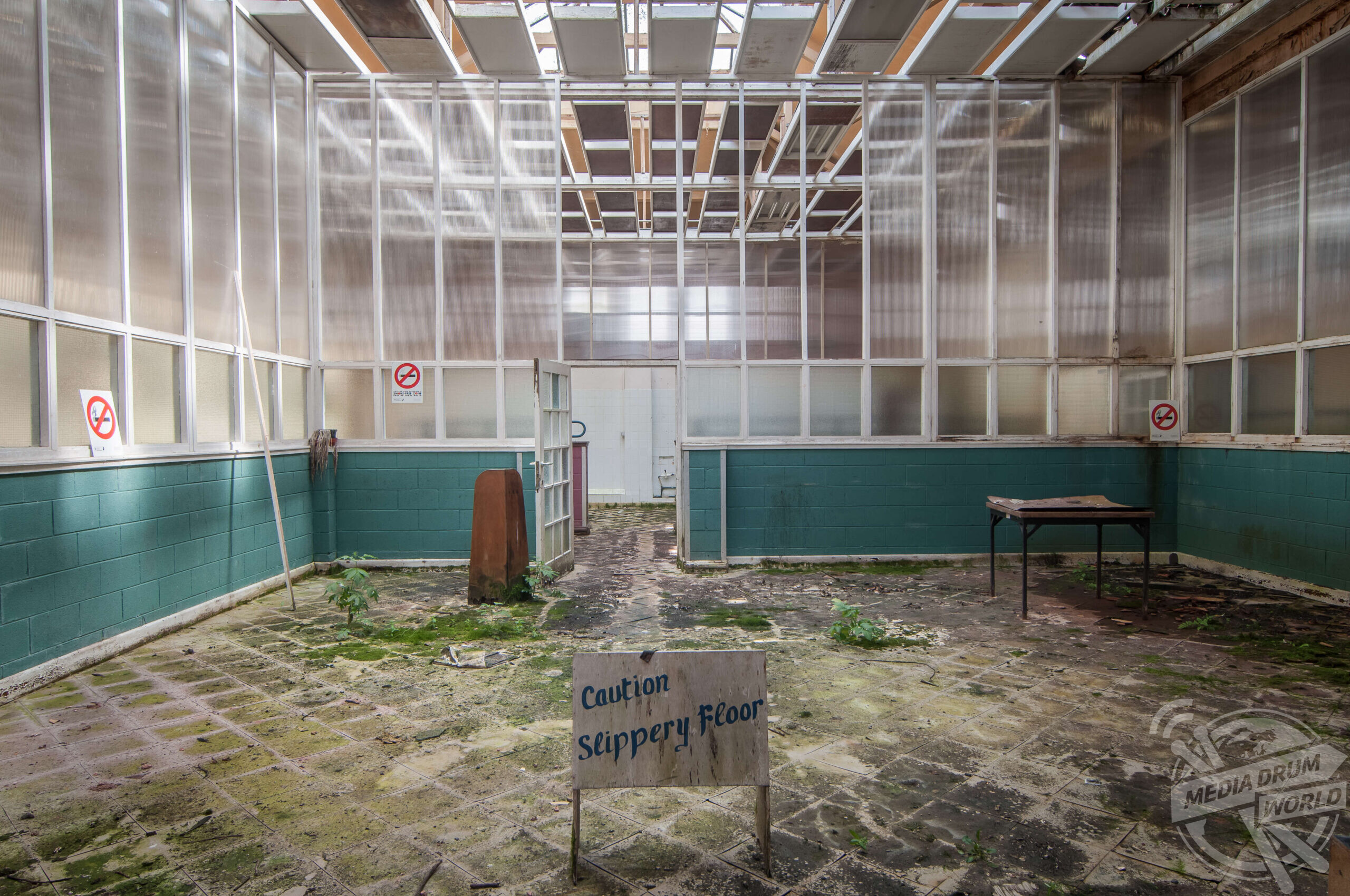
By Kate Harrold
CREEPY images have revealed the infamous Irish asylum that tortured homosexuals and treated the mentally ill with lobotomies for two centuries before finally closing its doors just SEVEN years ago.
In one image, three leather-clad doors stood open in the maximum-security wing of the asylum leading to padded cells which once held patients considered to be high-risk.
In another, human bones remained in a bathtub alluding to the horrors that once took place within the asylum’s walls.

The images were captured by hobbyist urban explorer Cathal Henry (48) from Dublin, Ireland, who is better known online as Uncharted Ireland. Located in the west of the country, the building is referred to by urban explorers as Asylum X. Cathal captured the images on his Canon 5D Mark II camera over four visits – the longest of which lasted for nine hours.
Asylum X originally opened in 1833 to house 150 patients but over the following century, the asylum system grew exponentially in Ireland and by the 1950s, Asylum X was home to over 2,000 patients. This brought the population of the local town up to 6,000 meaning a third of the population was considered ‘mentally insane.’
Asylum X was notorious for its barbaric ‘treatments.’ Mental illness was often treated with a lobotomy or a three day stay in ‘the pit’ without food or water. Those who were suspected to have depression were taken to the ‘circulating chair.’ This spun up to 60 times a minute to encourage compliance.

The asylum also carried out inhumane ‘correctional’ procedures to treat homosexuality. Patients were shown images whilst being subjected to electric shocks or vomit-inducing drugs to teach them the ‘correct’ response.
“There’s a lot of sadness that’s felt in these places,” Cathal said.
“All it took in the early 1900s was a priest or a cop to sign off the document and you could easily be admitted to one of these asylums – never to leave again.

“I visited with a friend of mine who is a paranormal investigator. There was something very draining about the atmosphere. I could barely talk.
“My friend, who is perhaps more open to the paranormal than I am and therefore experiences it more, took three camera batteries and two mobile phones. After thirty minutes, they had all been completely drained of life despite little to no use.
“It’s certainly strange because as I said, I myself could feel the energy sapped out of me. After a visit like this, it can take me a few weeks to pick the camera up again.

“It’s a harrowing place – very eerie, creepy, and oppressive.
“There’s something rewarding in the idea of documenting Ireland’s history through the lens. These buildings might not always be there, but we’ve captured and shown people what’s inside.”
In the late 20th century, Ireland began to deinstitutionalise its asylums. Once the pillars of local economies, asylums fell out of favour when the horrors of what went on inside began to escape. Perhaps the most shocking revelation of all is that Asylum X only finally closed its doors in 2013.
For more, see @uncharted_ireland.






